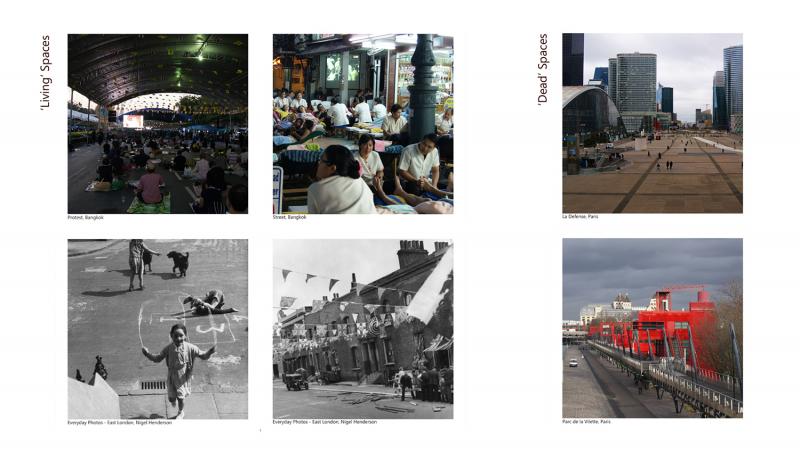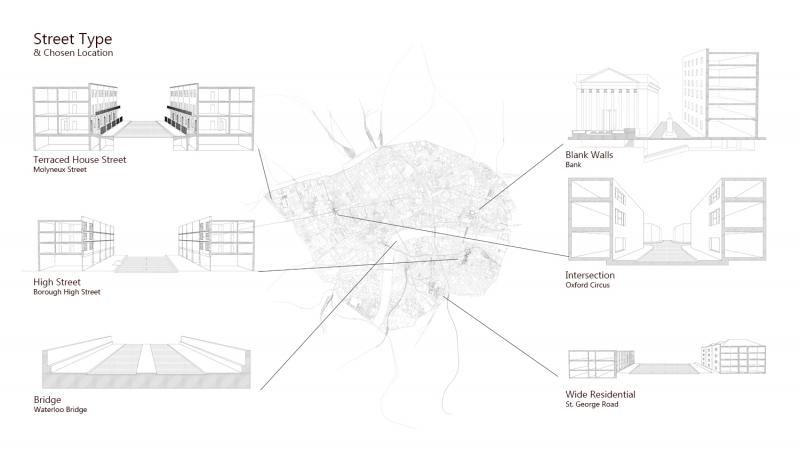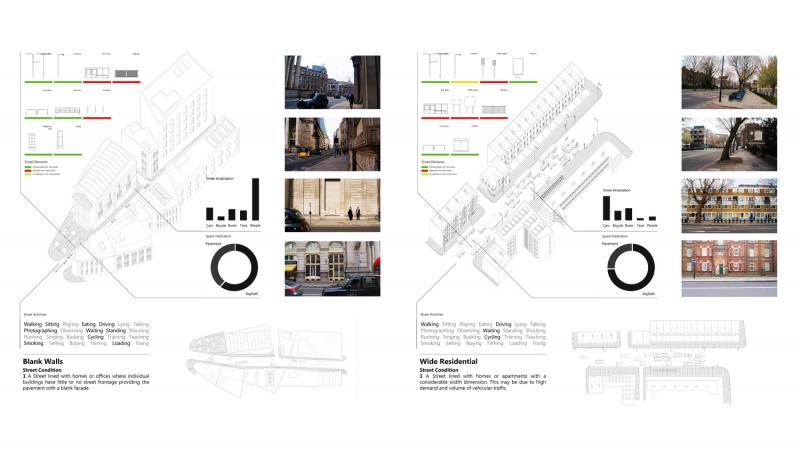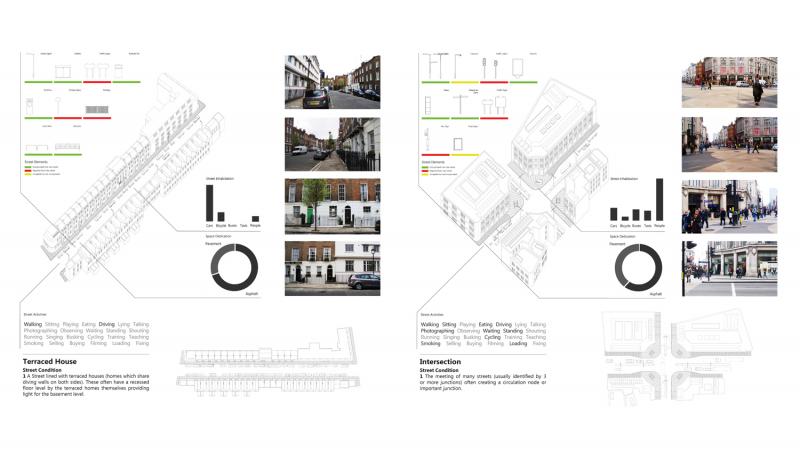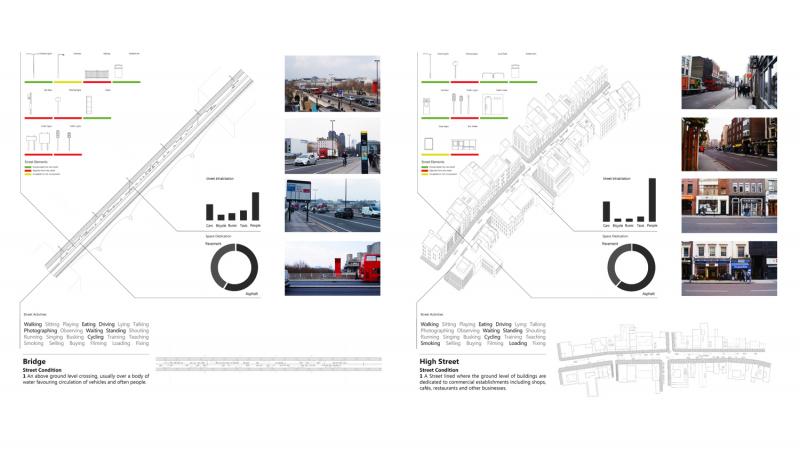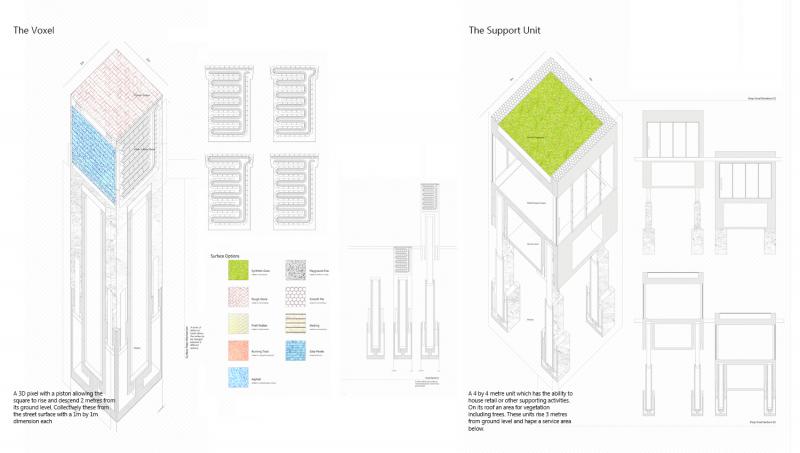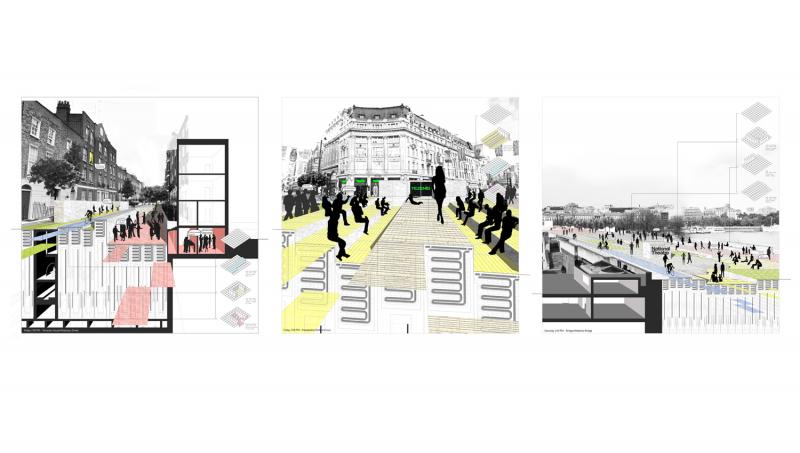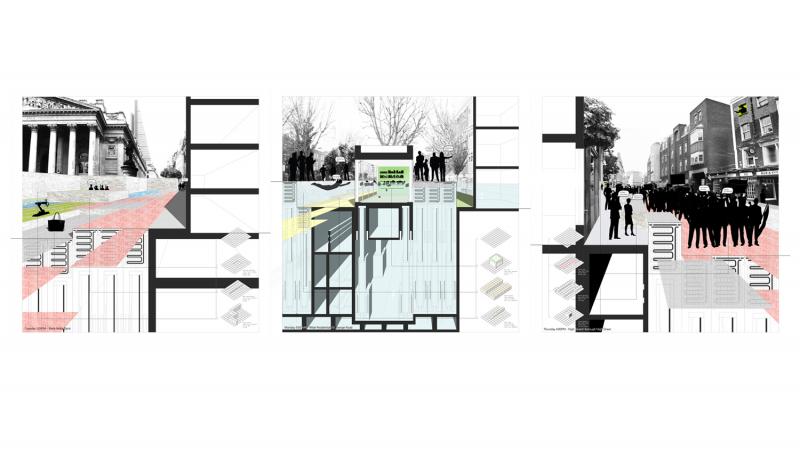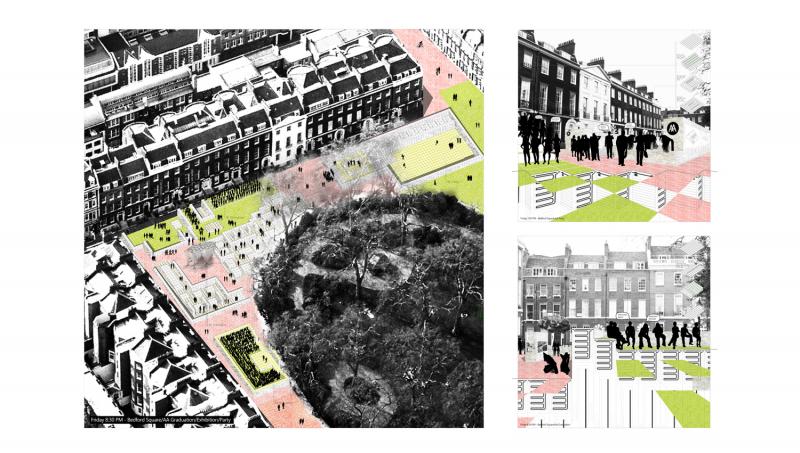Facts
The current structure of the street is a serious and problematic condition. Pedestrians, Cyclists, Car, Lorry, and Bus Drivers are in constant conflict with one another. Pedestrians in an average road have a third of the space available for their exclusive use even when there are more of them around. At the city scale, we find that 17% of London is covered in asphalt an area large enough to fit just under 42,000 football pitches and around 4,500,000 terraced houses.



